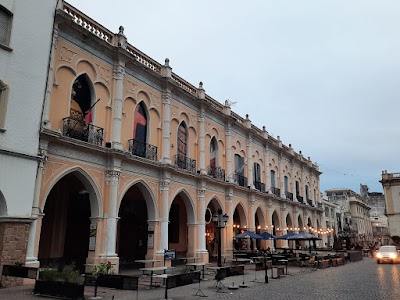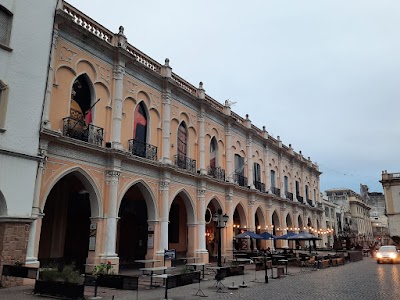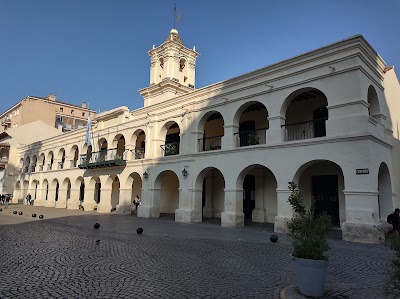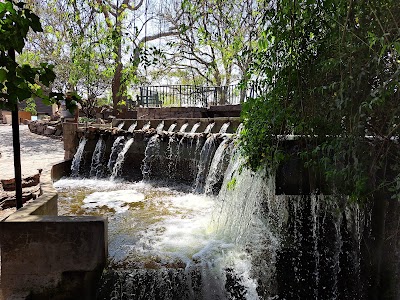MAAM Museum (Museo de Arqueología de Alta Montaña)
Overview
The Museo de Arqueología de Alta Montaña (MAAM), or Museum of High Altitude Archaeology, is an extraordinary destination for travelers exploring Salta, Argentina. Situated in the heart of the provincial capital, this captivating museum provides an intimate glimpse into the ancient cultures of the Andes, with a particular emphasis on the Inca civilization and their remarkable high-altitude archaeological sites.
MAAM was inaugurated in 2004, following a groundbreaking discovery on the Llullaillaco volcano, which towers over 6,700 meters (22,000 feet) above sea level. Here, Argentine and international archaeologists unearthed the exquisitely preserved remains of three Inca children, believed to have been involved in a capacocha ritual—a sacrificial ceremony intended to honor the gods. Known as the Children of Llullaillaco, these mummies have captivated global audiences due to their pristine condition, providing invaluable insights into Inca rituals, burial practices, and the lives of the children chosen for these sacred rites.
The museum’s main attraction is undoubtedly the mummified remains of the children, which are exhibited on a rotating basis to ensure their preservation. Estimated to be over 500 years old, these mummies retain strikingly intact features, clothing, and even some internal organs, thanks to the cold and dry conditions of the Andean peaks. This remarkable preservation offers visitors a rare and poignant glimpse into the past, transforming the often abstract concept of ancient civilizations into a deeply human experience.
Beyond the mummies, MAAM boasts an extensive collection of artifacts recovered from high-altitude Inca sites. These items, ranging from textiles and ceremonial objects to everyday utensils, tell the story of the Inca Empire's vast reach and sophisticated societal structures. The museum's exhibits are thoughtfully curated, blending modern technology with archaeological research to create an engaging and educational experience. Multilingual displays and audio guides in various languages, including English and French, ensure that international visitors can fully appreciate the historical context and significance of the exhibits.
A unique aspect of MAAM is its commitment to scientific rigor and ethical display practices. The museum collaborates with experts in anthropology, archaeology, and conservation from around the world, maintaining high standards for its collections. Furthermore, MAAM follows strict protocols for handling and displaying the mummies, acknowledging their cultural and spiritual significance. This dedication enhances the educational experience while respecting the heritage and beliefs of indigenous communities.
The journey through the museum extends beyond its walls, as MAAM regularly hosts lectures, workshops, and temporary exhibitions that delve deeper into various aspects of Andean archaeology and indigenous cultures. These events, often led by renowned researchers, provide a comprehensive understanding of the ongoing relevance of ancient practices and their resonance within modern cultural identities.
Conveniently located in Salta’s historic city center, the museum is an easy addition to any travel itinerary. The neoclassical architecture of the building harmoniously blends with the colonial aesthetic of the surrounding area. After your visit, take the opportunity to explore the city’s charming plazas, vibrant markets, and historical sites, enriching your cultural understanding of the region.
For those intrigued by the technical aspects of archaeology, MAAM employs advanced techniques such as CT scans and DNA analysis to study the mummies non-invasively. These technologies have revealed surprising insights into the health, diet, and even the cause of death of the children, painting a vivid picture of life in the Inca Empire.
In conclusion, a visit to the MAAM Museum transcends a mere exploration of artifacts; it offers an immersive experience into the history and spirituality of the Andean people. The respectful presentation of the Children of Llullaillaco and the comprehensive exhibits on Inca culture create a profound connection between past and present. Whether you are a history buff, an archaeology enthusiast, or simply a curious traveler, MAAM promises to leave a lasting impression and deepen your appreciation for the rich cultural heritage of this remarkable region.







